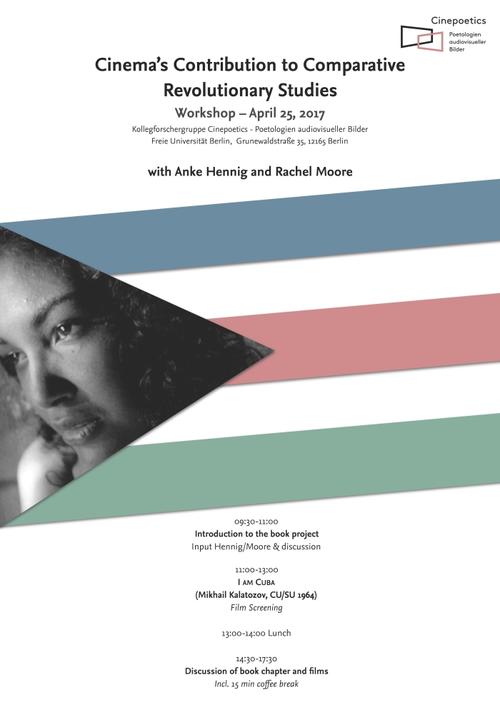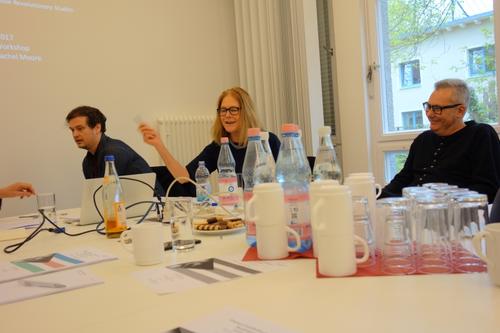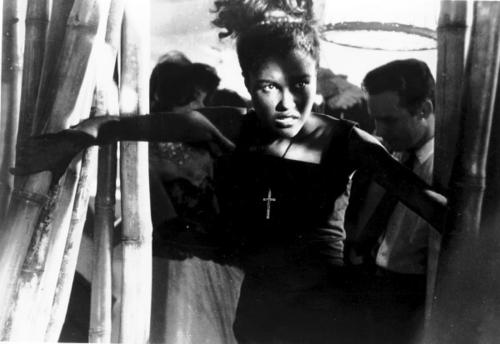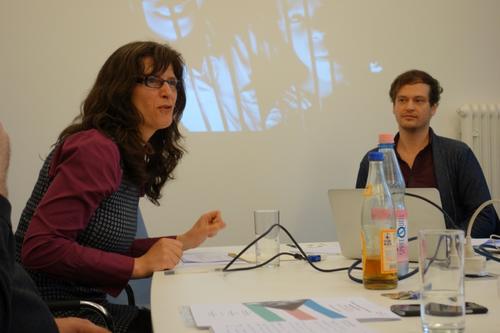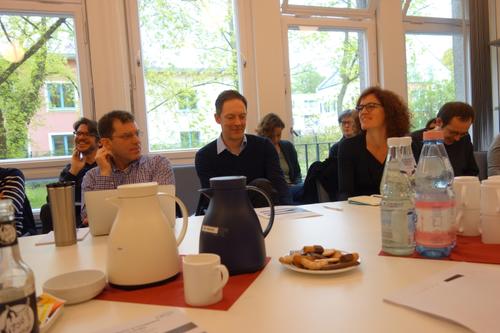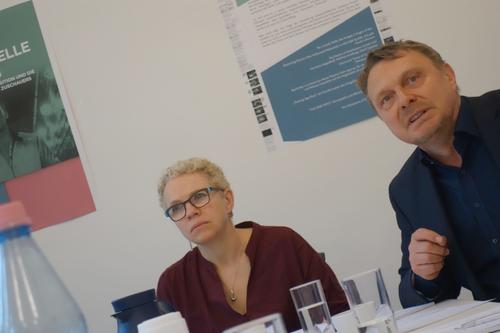Cinema's Contribution to Comparative Revolutionary Studies
24.04.2017 | Workshop by the Cinepoetics group with Anke Hennig and Rachel Moore.
In strong relation to works by the Soviet filmmaker Mikhail Kalatozov, Anke Hennig and Rachel Moore discussed the possibility of what they call "revolutionary studies" and their connection to film. The workshop "Cinema's Contribution to Comparative Revolutionary Studies" brought together diverse thoughts of our fellows concerning the group's research focus, "poetics and politics". Among the guests were David N. Rodowick (University of Chicago) and Erica Carter (King's College, London).
By way of an introduction to the topic of revolutionary studies, Hennig and Moore discussed their latest book project, which revolves around two films by Mikhail Kalatozov: Salt for Svanetia (1930) and I Am Cuba (1964). Both accounts capture certain modalities of revolution in specifically cinematic terms. As outlined by Moore and Hennig, we must understand these modalities – e.g. the gaze of animals/humans, circularity, femininity, evolution of technology – as deeply rooted in their historical dimensions. It is then possible to tie these observations to theoretical constructs like Giorgio Agamben's anthropological machine, which describes the creation of an empty, inhuman zone in man, or to John Berger's conception of reciprocal seeing. In addition, Hennig and Moore link Kalatozov's films to Michel Foucault and Georges Bataille's notion of transgression as well as Villém Flusser's techno-imagination.
The group then proceeded to watch I Am Cuba in the screening facilities of Cinepoetics and exchanged first impressions regarding Kalatozov's vision of post-revolutionary Cuba. In the afternoon session, both films, their links and oppositions, were discussed in depth. In dissecting Kalatozov's "politics of the senses," the participants underlined the importance of the camerawork in I Am Cuba, pointing out how the liberty of the apparatus relates to a certain invisible body of the nation. In a mediating fashion, it locates itself between the acousmatic voice that permeates the film and the depiction of revolutionary Cuba. The discussion brought to light that, while the voice is lacking a body, the orchestration of concrete bodies creates a collective revolutionary body that is held together by historical force.
Anke Hennig, Jan-Hendrik Bakels
Fellows and members of Cinepoetics engage in discussion.
Erica Carter, Hermann Kappelhoff
In addition to its numerous references to Soviet avant-garde films of the 1920s and 30s—including Kalatozov's own works—I Am Cuba can be seen as a recapitulation of early Soviet expressionist film. In this regard, both I Am Cuba and Salt for Svanetia make up a set of parentheses in his oeuvre.


